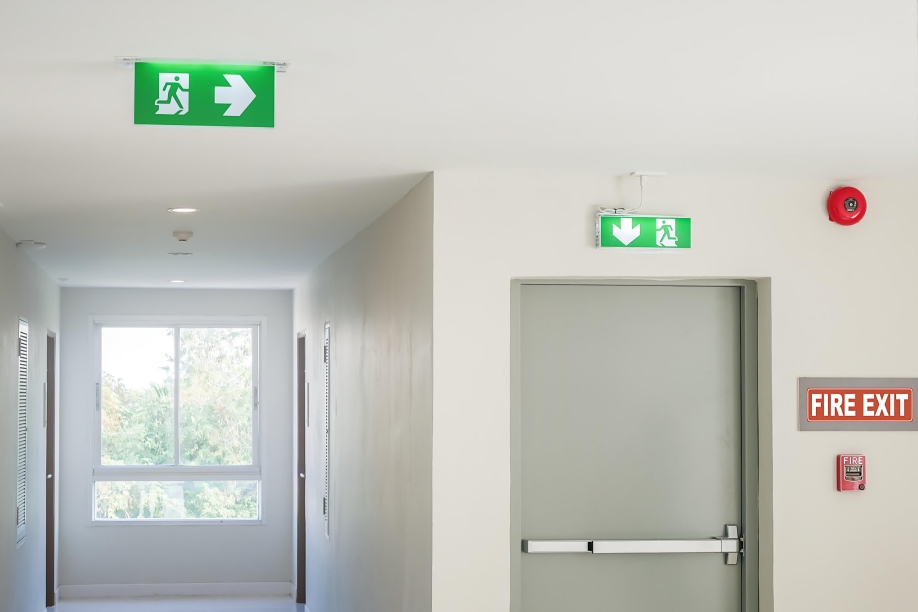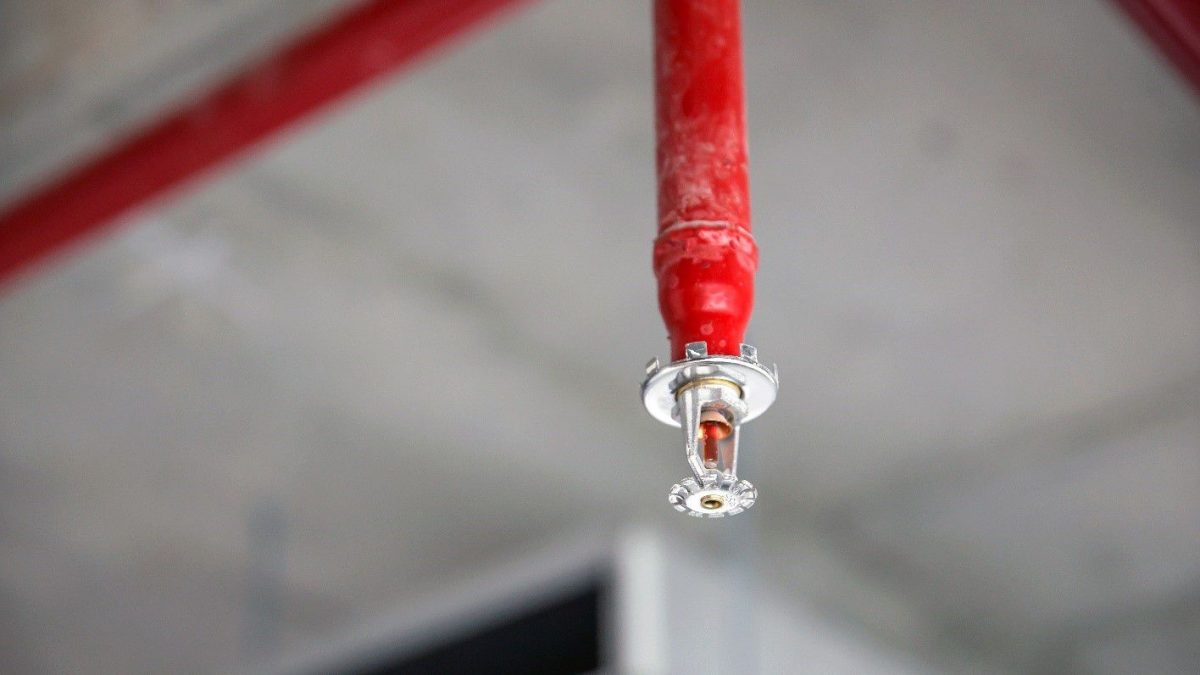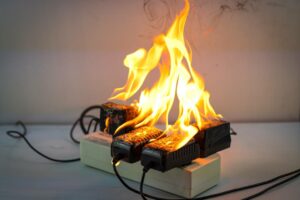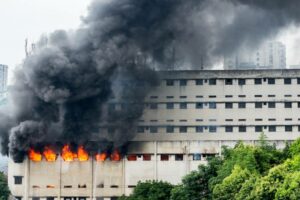A building’s fire sprinkler system installation should be done thoroughly and correctly to ensure effective operation and avoid non-compliance with local fire safety laws. Setting up the proper fire safety mechanisms for your business premises can be daunting, which is why it is always recommended to consult a fire safety specialist beforehand.
To learn the procedure for a fire sprinkler system installation, continue reading the article below.
Importance of Fire Sprinkler System Installation
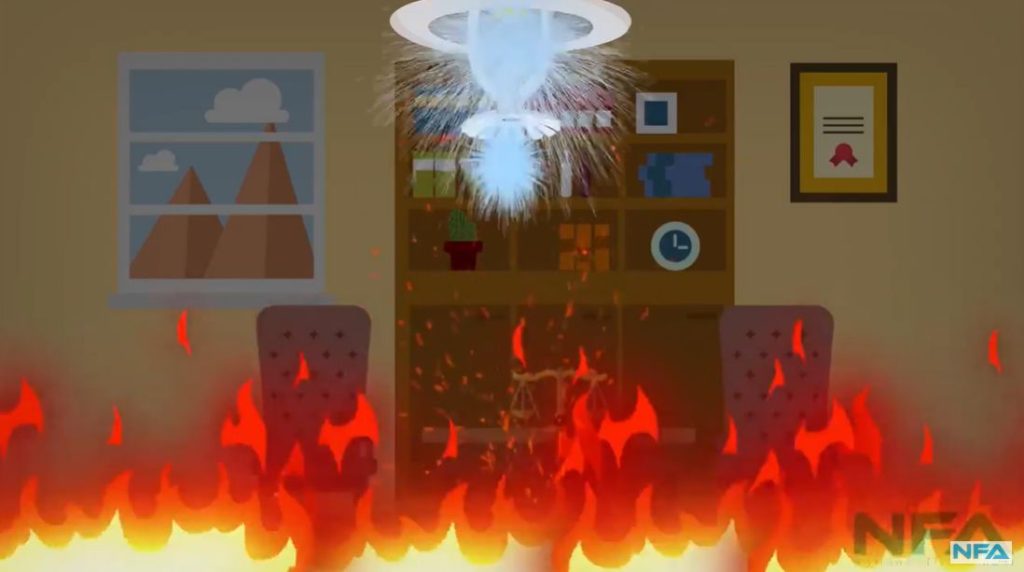
Fire sprinkler systems are critical in ensuring the safety of any building by effectively containing the spread of fire. These systems are designed to activate automatically in response to the presence of heat or flames, releasing a sprinkle of water droplets directly onto the source of the fire.
A well-installed and regularly maintained fire sprinkler system provides important support to other automated active and passive fire prevention systems. This can aid in the suppression of flames and smoke. Thus, a fire sprinkler system is key to slowing the spread of a fire, minimising damage, and stalling time for a building’s occupants to reach safety before the Fire and Rescue Department (BOMBA) arrives with reinforcements.
Furthermore, proper installation of a fire sprinkler system is crucial for obtaining a fire certificate approval from BOMBA. This certification ensures that your building complies with fire safety regulations and mitigates the risk of fire-related hazards. Neglecting to obtain a fire certificate results in legal and financial consequences and can compromise the safety of building occupants.
Therefore, fire sprinkler systems must be installed by qualified professionals and adhere to BOMBA’s guidelines to ensure compliance and safeguard the welfare of individuals and the surrounding environment.
Read More: The Importance of An Effective Fire System Maintenance
Important Fire Sprinkler System Components and Installation
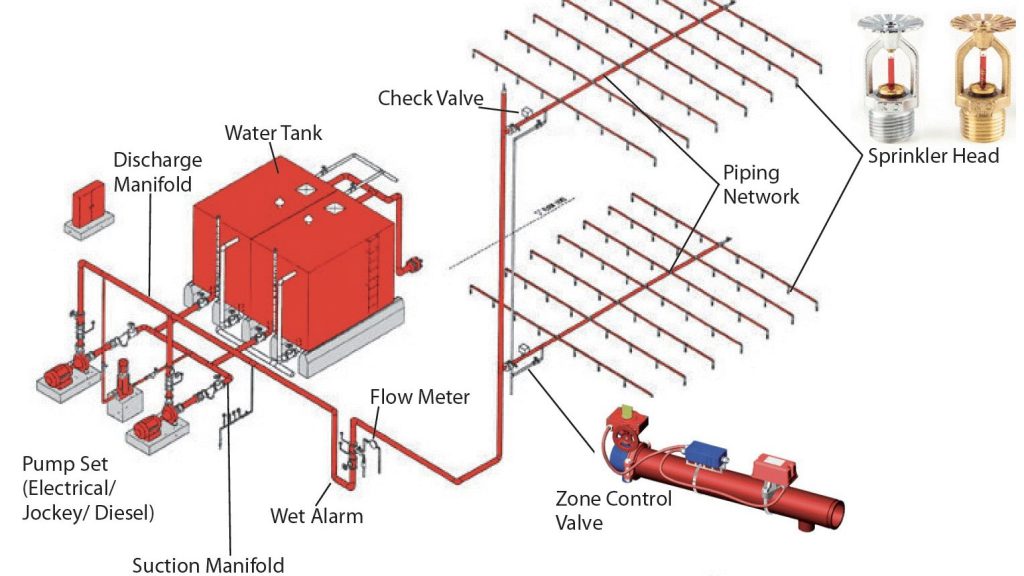
Understanding a fire sprinkler system’s vital components and the importance of installation is essential to ensure it functions properly. The following is a list of components that have to comply with fire sprinkler installation requirements:
1. Sprinkler Pump
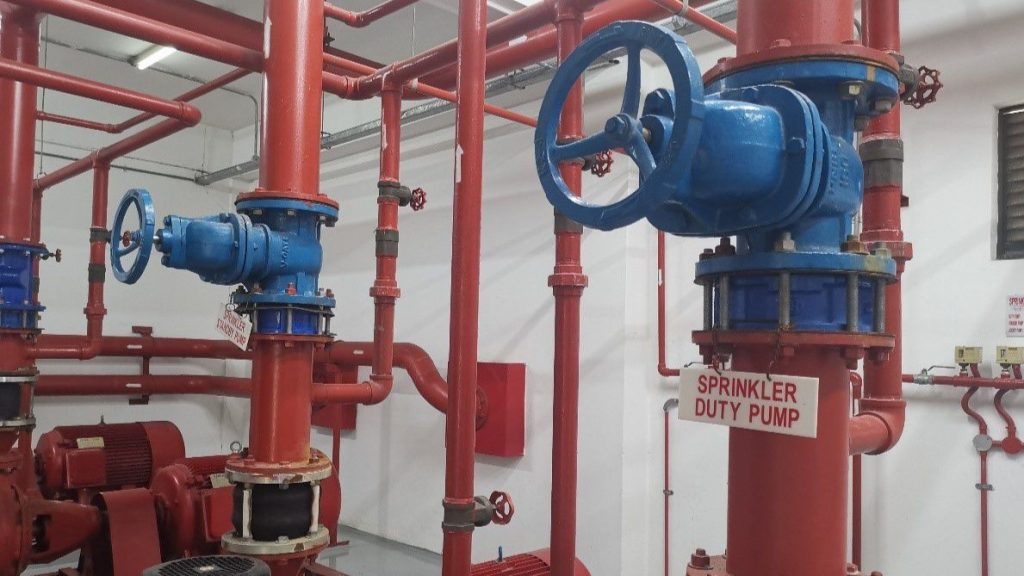
A sprinkler pump is used to pump water from a storage tank or water source to a network of sprinklers. It distributes water effectively and efficiently in the event of a fire. To maintain system pressure, two sets of pumps are available, one on duty and the other on standby. A jockey pump is provided as well.
Sprinkler pumps come in different sizes and capacities and must be selected according to the hazards they will protect against. Furthermore, the pressure and flow requirements will differ based on the building’s height and the classification of the hazard.
2. Pump Starter Panels & Controls
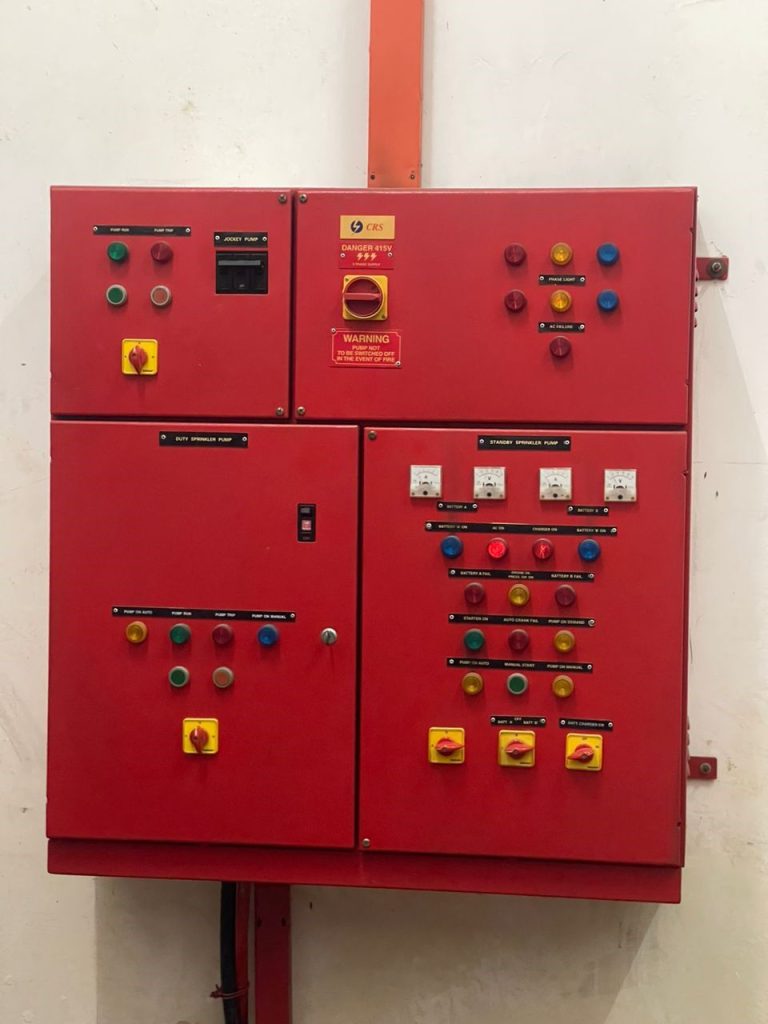
Pump starter panels and controls are electrical control panels that ensures the pumps start and stop based on predetermined conditions such as water level, pressure, or flow rate. When installing a pump starter panel, it should be compartmentalised for each duty, standby, and jockey pump and equipped with indicator lights. It should also have ventilation slots with insect screens to prevent insects from entering.
Additionally, power supply cables should be made of mineral-insulated copper core (MICC) or of fire-rated material and placed in areas with low fire risk. Electrical interlocks should also be installed to prevent the sprinkler pumps from operating simultaneously. A buzzer should be sounded if the isolator is in the off or manual position.
Finally, the sprinkler pump sets should be capable of starting automatically. However, stopping it should be done manually.
3. Sprinkler Tanks
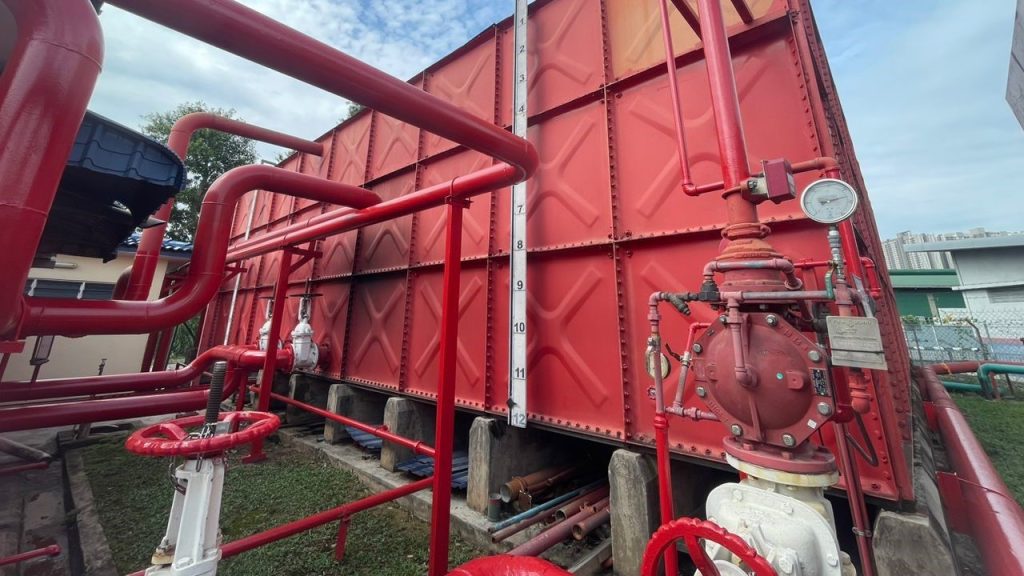
Sprinkler tanks are large tanks designed to hold and store water specifically for use in fire protection systems. They can be made of various materials, including pressed steel, fibre-reinforced polyester (FRP) and concrete. Pressed steel tanks should be galvanised and coated with bituminous paint.
They should also be compartmentalised, and equipment like ball float valves, overflow pipes, and water level indicators should be provided. The minimum effective capacity of a sprinkler storage tank that does not depend on inflow should be determined based on the hazard classification and the height range between the lowest and highest sprinkler.
In addition, sprinkler tanks not dependent on inflow can be installed anywhere and together with hose reel tanks. The tank capacity should be the total water storage for both systems, and the hose reel tap-off level should be more than the sprinkler tap-off level to maintain water for the sprinkler system.
4. Breeching Inlet
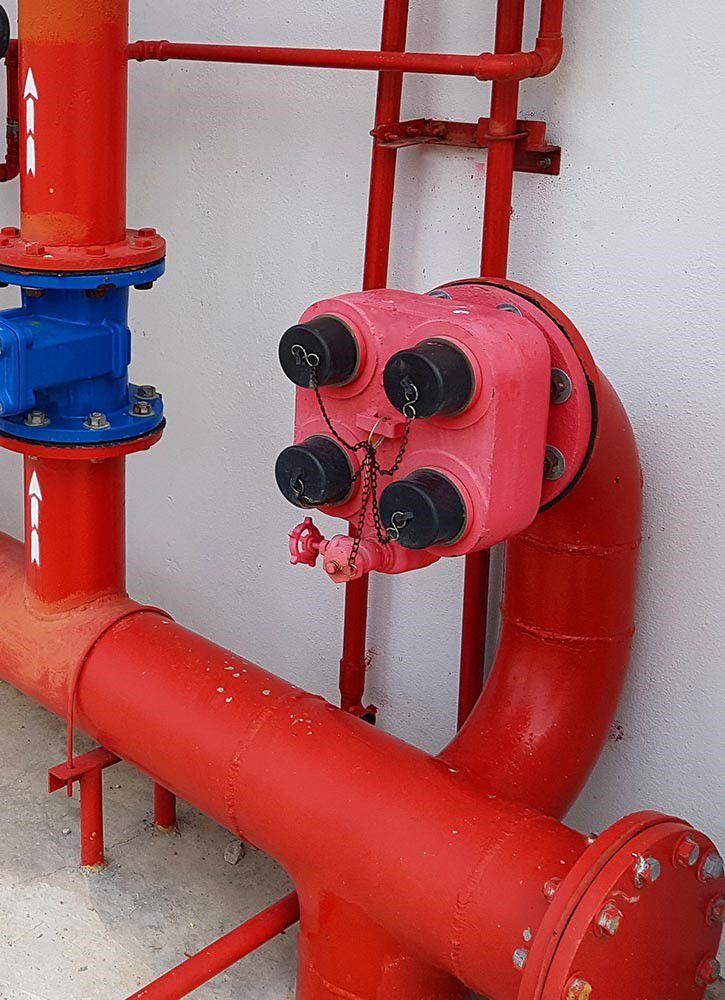
Breeching inlets are openings or connections installed on a fire sprinkler system for firefighters to access water to extinguish fires. They are typically located outside of a building and are connected to the fire sprinkler system riser.
These inlets should be of the 4-way type and meet the standards outlined in M.S.120: Part 3. If enclosed, the inlets should adhere to the regulations in M.S.120: Part 5 and be labelled ‘Sprinkler Inlet’. Additionally, a drain must be installed at the bottom of the riser to empty the system after use.
Lastly, breeching inlets should be situated in close proximity to the fire appliance access road (within 18 metres) and not exceed a distance of 30 metres from the nearest external hydrant outlet.
5. Sprinkler Head
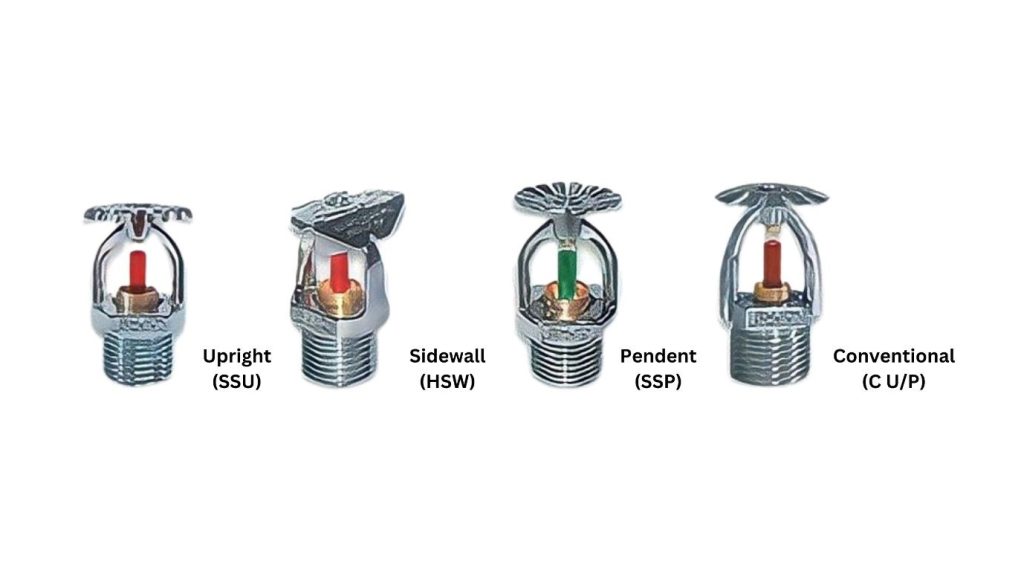
Sprinkler heads are installed in ceilings or high on walls and contain a heat-sensitive element that reacts to high temperatures, causing them to activate and release water onto the fire. Various types of sprinkler heads are available, each designed for specific applications based on the hazard and the required flow rate and pressure.
Moreover, all building areas are safeguarded with sprinklers except:
- Staircase enclosures
- Electrical rooms
- Toilets
If a building’s ceiling void surpasses 800mm, a sprinkler system must be installed unless the construction is non-combustible and does not contain flammable materials. Electrical wiring within the ceiling void must also be contained in steel conduit or made from fire-rated materials. Lastly, sprinkler heads must not endure a pressure greater than 12 bars, particularly in high-rise structures.
6. Installation Control Valve
Installation control valves, including main stop valves, alarm valves, drain line valves with stop valves, water flow gauges, and pressure gauges, must be present in every sprinkler installation. For car parks, separate installation of the control valves is necessary for not more than 1,000 sprinkler heads each.
Each floor of the building should be designed as one or more zones, and a flow switch should be installed to control the water distribution for each zone. An electrical monitored subsidiary stop valve should also be included for each zone to sound a monitoring alarm signal when the valve is not fully open.
7. Sprinkler Pipework
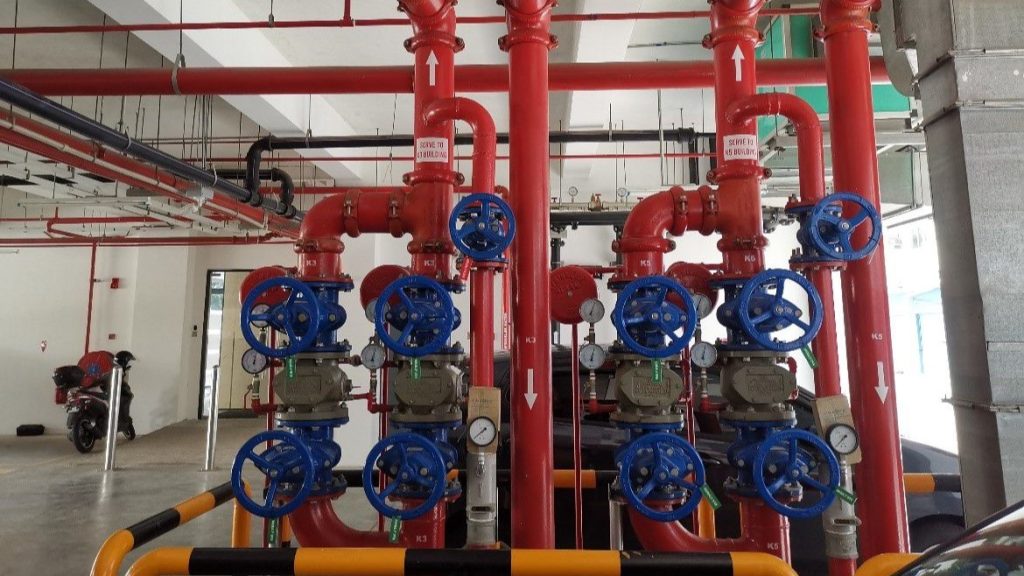
A sprinkler pipework refers to the pipes and fittings that comprise a sprinkler system. It is connected to a water source and controlled by valves regulating water flow. It is typically made of black steel or galvanised iron with a medium grade of B.S.1387. This grade is suitable for above-ground pipework. However, for underground pipework, a heavy gauge of Class C is recommended to withstand the weight of the soil and potential damage from external forces.
Moreover, to ensure visibility, sprinkler pipework should not be concealed in concrete slabs and must be painted with a red gloss finish or marked with at least 10mm wide red bands.
Read More: Workplace Safety: A Shared Responsibility in Malaysia
Palcon: Seamless Fire Sprinkler System Installation
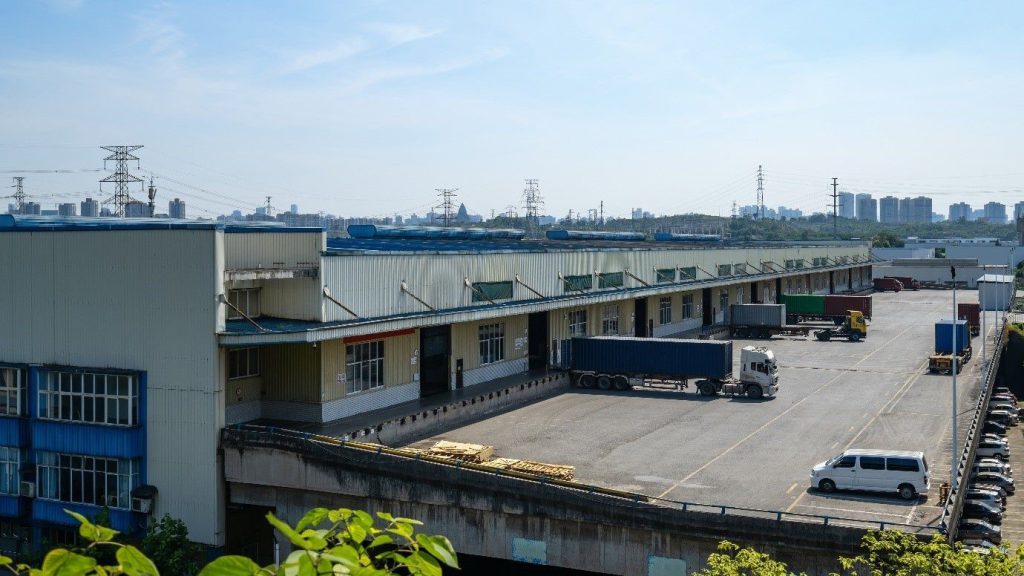
Evidently, equipping a building with the appropriate fire safety systems can be confusing and highly technical challenge.
At Palcon, we provide an inspection checklist to oversee the installation process, outlining areas that require examination, such as detecting leaks and ensuring that the components are installed according to approved drawings. Our experts also ensure that installed fire sprinkler systems are in optimal working condition and have received approval from local authorities, such as a fire certificate from BOMBA.
For more information on our services, such as our fire suppression system, do contact us to learn more.

